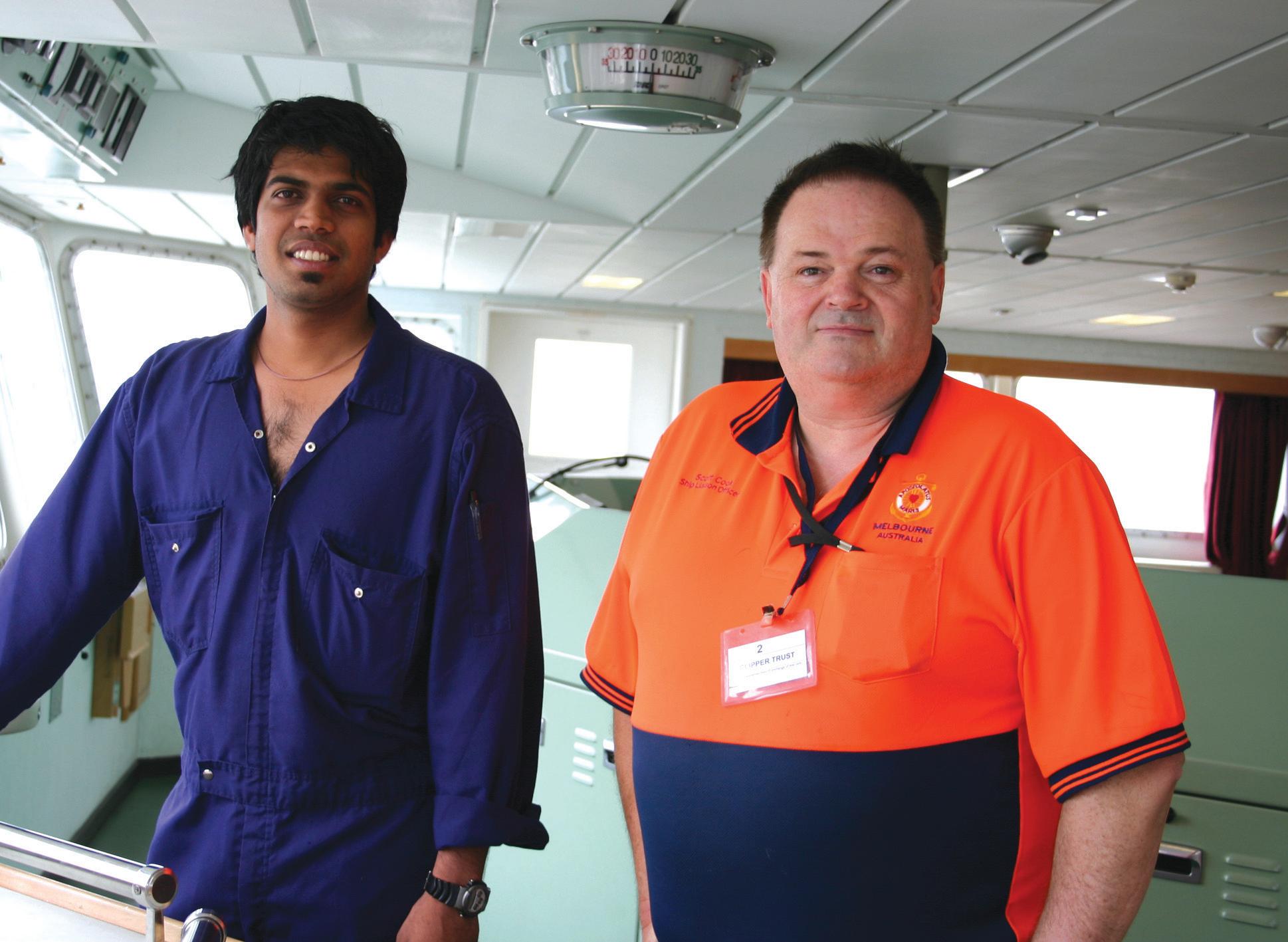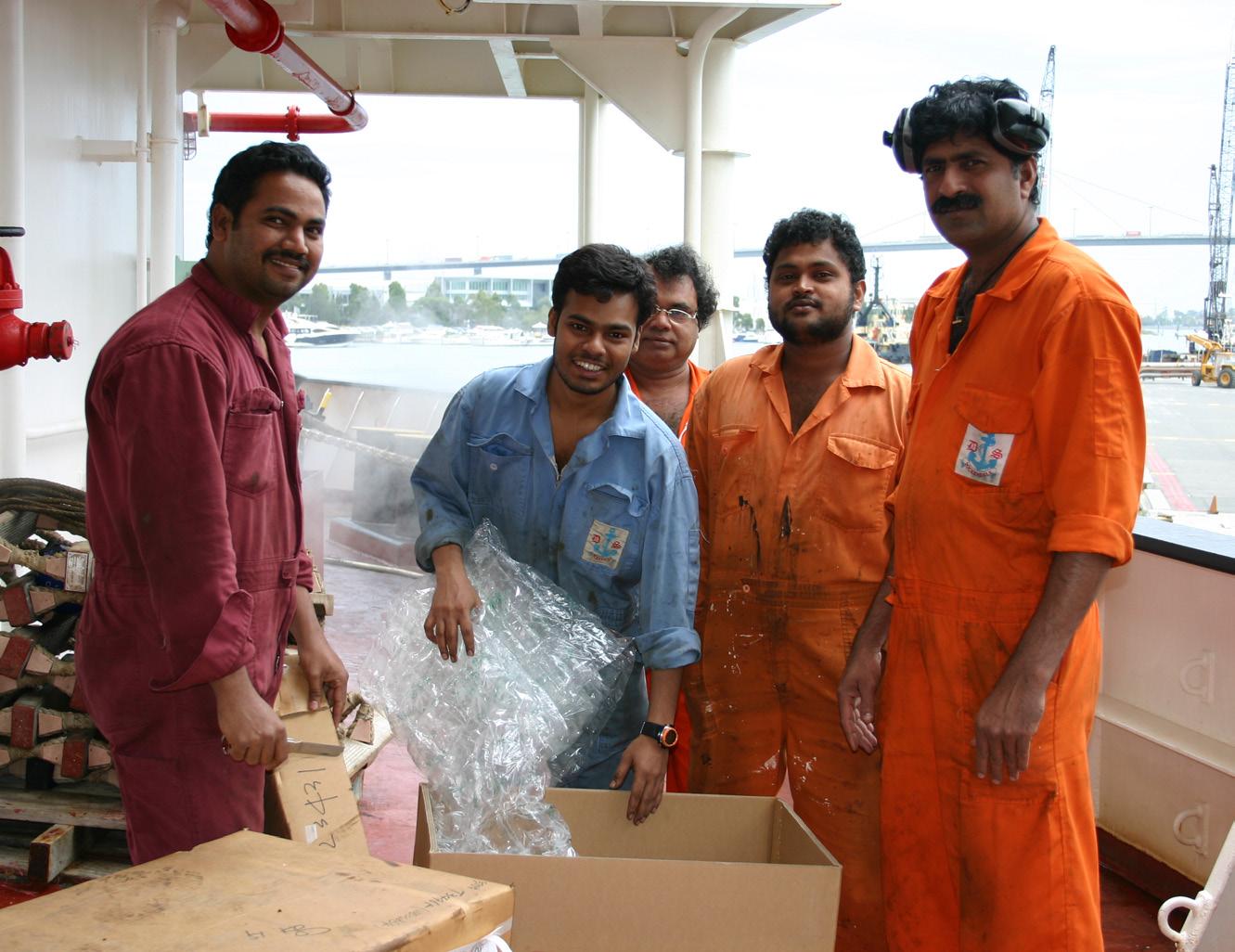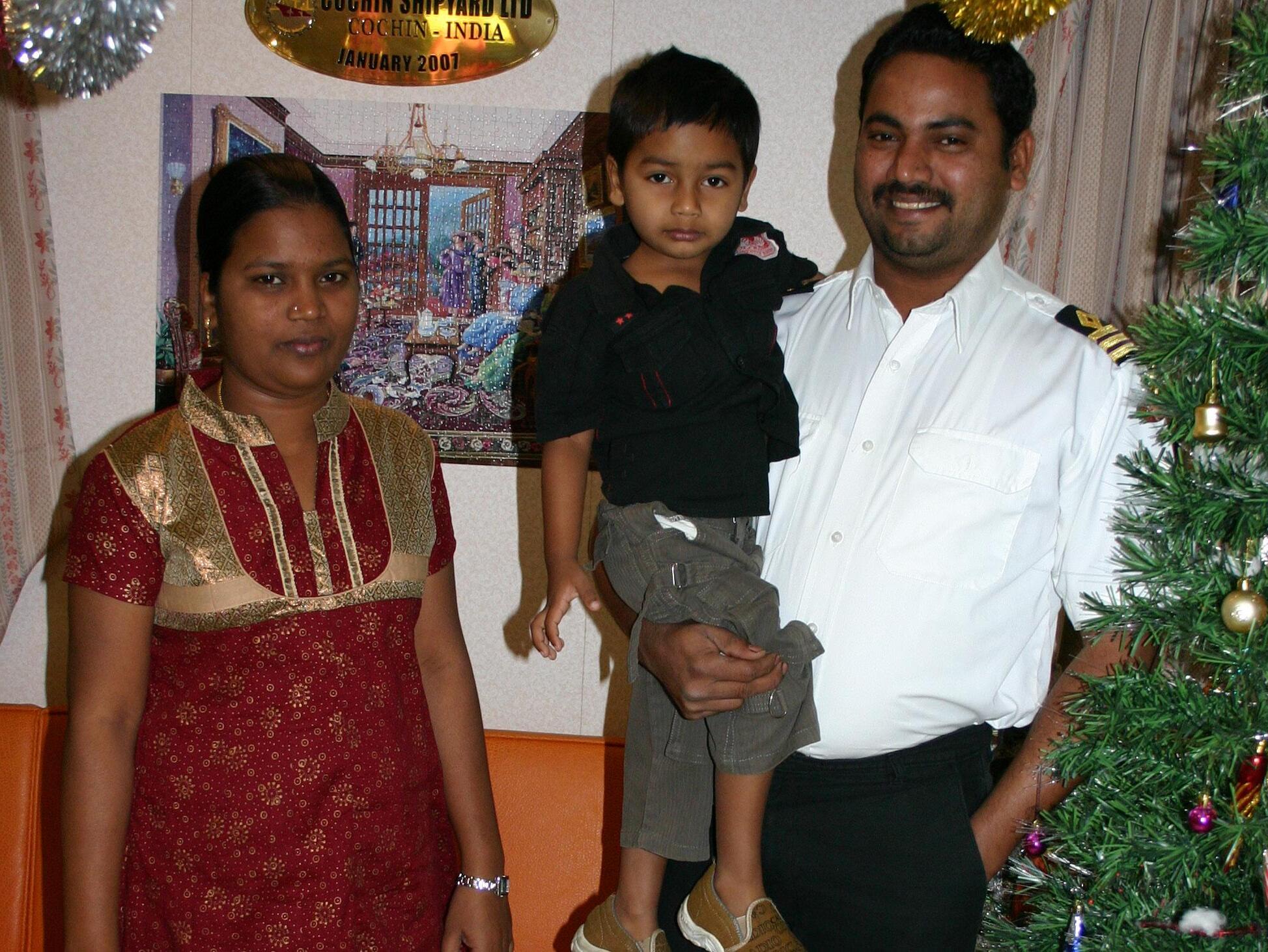
5 minute read
On the high seas
from 2010-01 Sydney (2)
by Indian Link
Far as the breeze can bear, the billows foam, Survey our empire, and behold our home Byron To people, like me, who have only worked in shore-side occupations, life on the sea will always hold an element of awe, romance and to some extent, fear. Seafaring souls tell me that life on the seas is not only about loving the wind on the face as one skims across the water; it is a combination of innumerable nautical miles, hard work, adventure, thrill, monotony, exhaustion and sometimes loneliness.
While sailing through oceans of stories and visiting ports of the world, nautical life has always intrigued me. When Scott Cook, from the Stella Maris Seafarers Centre offered me an opportunity to spend time on an Indian-run ship that was visiting Melbourne, I went armed with camera, notebook, recorder, windcheater, solid shoes et al, to look at the world from the deck of the m/v Clipper Trust.
Built in Cochin, India the Clipper Trust is owned by Danish group Clipper M/S and contracted by CSR to carry raw sugar to Melbourne’s sugar refinery, and gypsum to CSR’s plasterboard factories. Classified as a 30,000 DWT bulk carrier, the Clipper Trust was delivered and launched in Kochi in January 2007.

This cargo ship had docked into Yarraville Port in Melbourne just before Christmas, carrying 28,000 tons of sugar from Bundaberg, Queensland.
A safety helmet was provided, the security check was completed and I climbed up a gangway with Scott, who proved to be an excellent guide. Shaking hands with young Sydney D’Costa, the Second Officer, I took in the ship’s atmosphere. Someone had taken great pains to decorate it with Christmas stars and tinsel. A small Christmas tree sat in the corner of the dining room secured and fastened like all other furniture and the TV, to avoid movement and injury when the sea got choppy.
Before lunch, Sydney took us to the upper deck to view the proceedings. Massive cranes were being used to offload sugar in a systematic manner. The crane operators were seated several feet above ground in a tiny compartment handling the machines expertly. Looming clouds and spitting rain were not favourable for offloading sugar, and they had to stop work several times due to inclement weather. The Captain Henry Robbins had planned a Christmas party and he was not pleased at the possibility that the delays could set his ship behind schedule.
A beaming chef invited me to have lunch on the ship after I had finished the official tour. His kitchen was spotless and a yummy looking curry was cooking in a large pan. I thought to myself, ‘If I had to spend months on this ship, I would make sure I remain in the cook’s best books!’ The delicious prawns and pulao that were dished out for us at lunch reminded me of my trips to coastal parts of India and their distinctly coconut flavoured food.
The rest of the afternoon was spent visiting an impressive engine room, viewing gigantic propellers that kept the ship afloat, admiring navigation charts, meeting more crew and finding out about their life on board. The ship’s Second Engineer Raju Mayapalli, had brought his wife and child along with him on this trip, a privilege only accorded to officials. Being the only family on board, Raju’s wife was getting
A typical bachelor pad with oodles of alcohol, smokes, Christmas paraphernalia and a skeleton with a dog collar reflected the Captain’s larrikin spirit bored, but tried to keep herself occupied with reading and her 5 year old child, who had already developed sea legs.
Some of the crew had gone ashore on a break, but those who remained seemed to be working constantly.

The interesting tour continued with a visit to the Captain’s cabin. A typical bachelor pad with oodles of alcohol, smokes, Christmas paraphernalia and a skeleton with a dog collar reflected the Captain’s larrikin spirit. Henry Robbins is originally from Mumbai, India but has settled in Melbourne with his wife and two daughters. From what Scott tells me, he is well liked by his crew and loves to party. As more visitors came in to meet the Captain we moved on to have a look at where the ship crew’s quarters. Their accommodation is small and simple but sufficient, according to Sydney.
Isn’t a mariner’s life hard, living in close quarters for months at a time with few technological amenities, as well as living with frequent threats of storms, fire and the possibility of being taken hostage by pirates?
“It’s all part of the job,” smiled Sydney.
Several hours and numerous photos later it was time to return to the Seafarer’s Centre, and on the way Scott regaled me with stories of life-long friendships with sailors, anecdotes of tough times on the sea, more details of his role as a ship Liaison Officer and the history of Stella Maris Seafarers Centre. He called it a home away from home where seafarers can get in touch with their families through computers and wireless internet, arrange money transfers through Western Union, find tourist and other information about Melbourne and relax or pray when they come offshore.
According to Scott he is warmly welcomed on board with very few exceptions, and his visits are highly appreciated. “Ship visitors listen to seafarers. If seafarers have problems, ship visitors offer any assistance possible. Ship visitors also offer other practical help, for example: distributing maps of local services; offering books, videos and DVDs to the crew; providing international phonecards at the best rate available; and providing transport to shops or seafarers’ centres,” he said.
Melbourne’s Stella Maris Seafarers Centre is one of 385 similar organizations around the world. Each has a charter from Rome to be led by a chaplain. These centres are the Catholic Church’s official missionary work in its care of seafarers. The Stella Maris Seafarers’ Centre Melbourne opened officially in 1973. Since that time, there have been a number of part-time Chaplains and numerous volunteers who have continued to care for seafarers with generous hearts - all in the spirit and tradition of Stella Maris and the Apostleship of the Sea.
The Centre also provides accommodation to sick or rehabilitating seafarers. It has a souvenir and snack shop on the premises, and provides a hall and other facilities to hold events The car park under the centre funds most of its activities, according to Scott.
“We respect and value all religions and beliefs,” he said. We approach seafarers as friends and offer support on the seafarer’s term. “We do not try to convert anybody, but we provide them the facility and means to enjoy their offshore visits and assist them in their spiritual needs, if required. A lot of Indian ships and crew enjoy coming to our centre,” claimed Scott.


The wife in every port, travel and cultures crossed… I am not sure if this is the reality of a seafarer’s life or just wishful thinking. After spending time on the ship I am convinced that whether it is rough weather and daily survival, or playing cricket with a coconut on an uninhabited beach, perhaps even breaking ice in freezing temperatures – every mariner has a story to tell. Life on the high seas is rich and bears little resemblance to any other.










